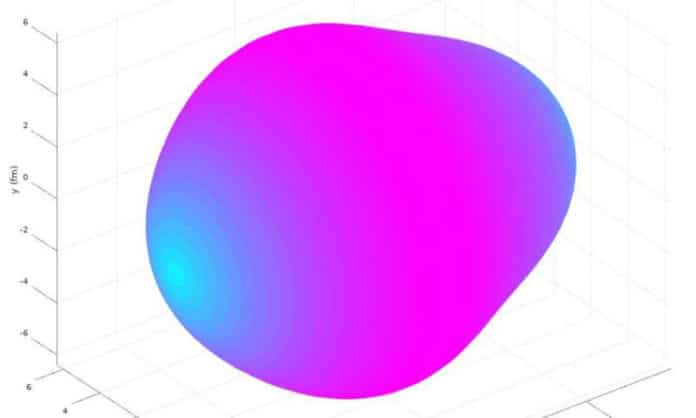According to the Standard Model, matter and antimatter should have been created in equal quantities at the time of the Big Bang—yet our Universe is made almost entirely of matter.
Now, scientists may have found a clue to solve this mystery.
Scientists at the University of the West of Scotland (UWS) and the University of Strathclyde have discovered the isotopes of the element thorium possesses the most pear-shaped nucleus yet to be found.
According to scientists, nuclei similar to thorium-228 could be used to determine the answer to the mystery surrounding matter and antimatter.
UWS’s Dr. David O’Donnell, who led the project, said: “Our research shows that, with good ideas, world-leading nuclear physics experiments can be performed in university laboratories.“
“This work augments the experiments which nuclear physicists at UWS are leading at large experimental facilities around the world. Being able to perform experiments like this one provides excellent training for our students.”
During experiments, scientists discovered that the nuclei in thorium-228 atoms have the most pronounced pear shape to be discovered so far. As a result, nuclei like thorium-228 have been identified as ideal candidates to search for the existence of an EDM.
Thorium-232 has a half-life of 14 billion years. It means it decays very slowly. The decay chain of this nucleus creates excited quantum mechanical states of the nucleus thorium-228. Such states decay within nanoseconds of being created, by emitting gamma rays.
Highly sensitive state-of-the-art scintillator detectors were used to detect these ultra-rare and fast decays. With the careful configuration of detectors and signal-processing electronics, scientists were able to accurately gauge the lifetime of the excited quantum states, with an accuracy of two trillionths of a second. The shorter the lifetime of the quantum state, the more pronounced the pear shape of the thorium-228 nucleus—giving researchers a better chance of finding an EDM.
Professor Dino Jaroszynski, Director of the Scottish Centre for the Application of Plasma-based Accelerators (SCAPA) at the University of Strathclyde, said: “This collaborative effort, which draws on the expertise of a diverse group of scientists, is an excellent example of how working together can lead to a breakthrough. It highlights the collaborative spirit within the Scottish physics community fostered by the Scottish University Physics Alliance (SUPA) and lays the groundwork for our collaborative experiments at SCAPA.”
Other co-authors of the study include Dr. O’Donnell, Dr. Michael Bowry, Dr. Bondili Sreenivasa Nara Singh, Professor Marcus Scheck, Professor John F Smith and Dr. Pietro Spagnoletti from UWS’s School of Computing, Engineering and Physical Sciences; and the University of Strathclyde’s Professor Dino Jaroszynski, and Ph.D. students Majid Chishti and Giorgio Battaglia.
Journal Reference:
- M. M. R. Chishti, Direct measurement of the intrinsic electric dipole moment in pear-shaped thorium-228. DOI: 10.1038/s41567-020-0899-4
